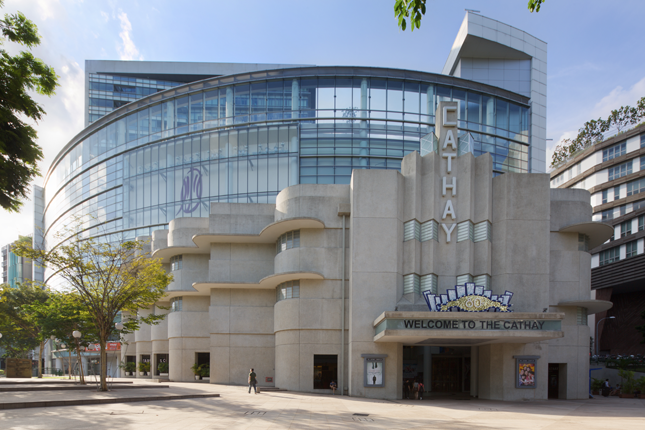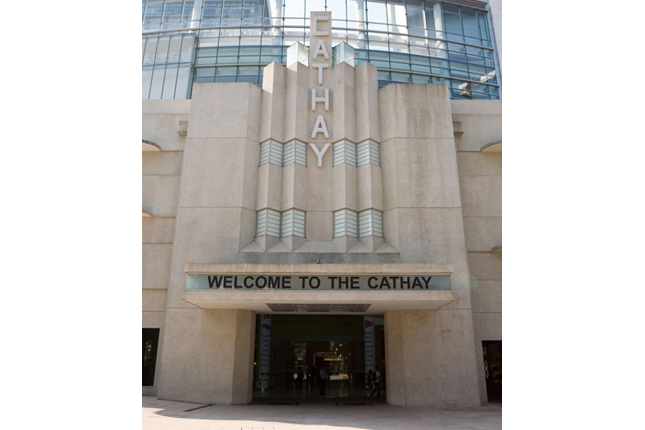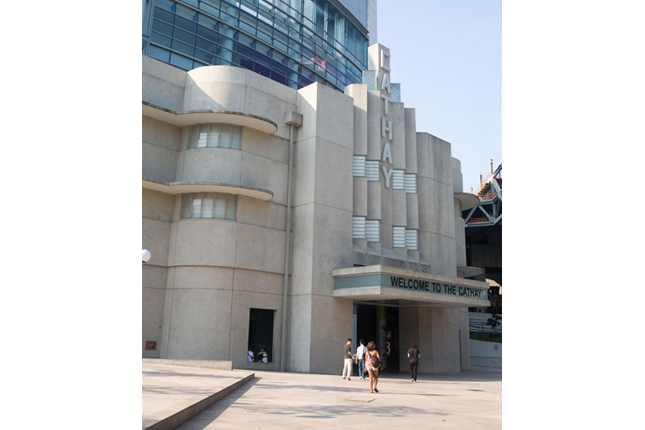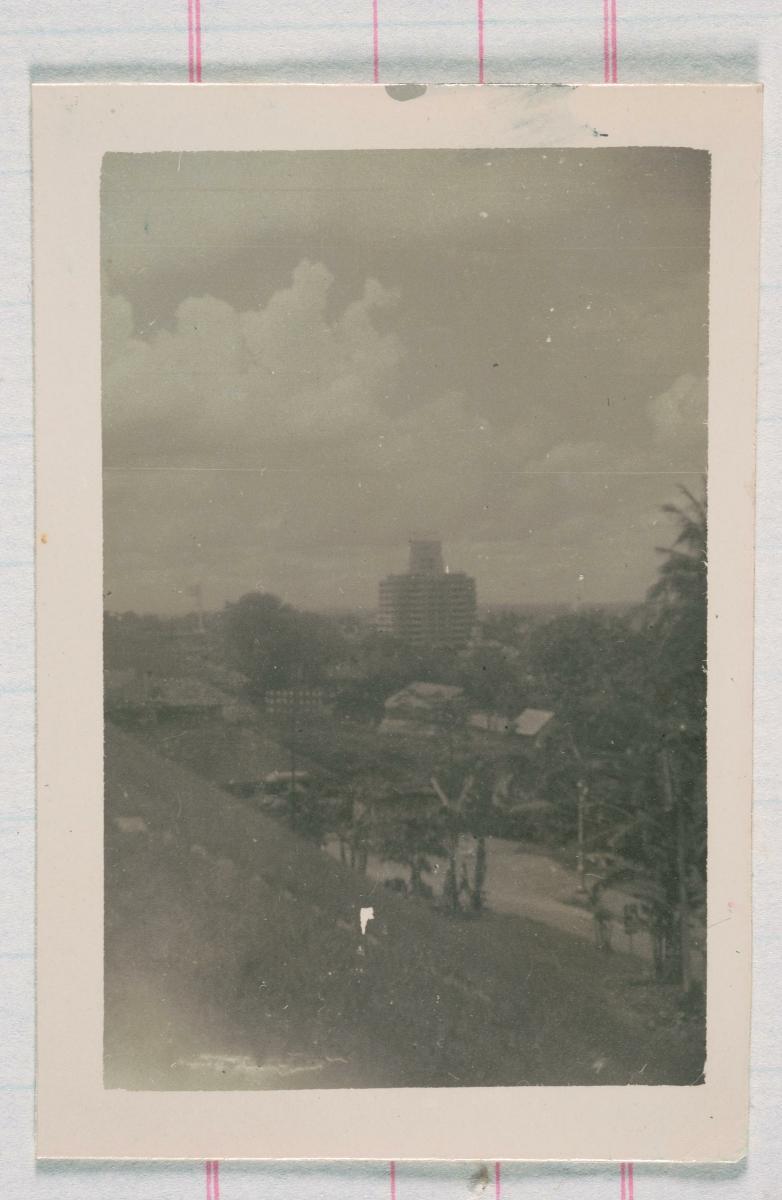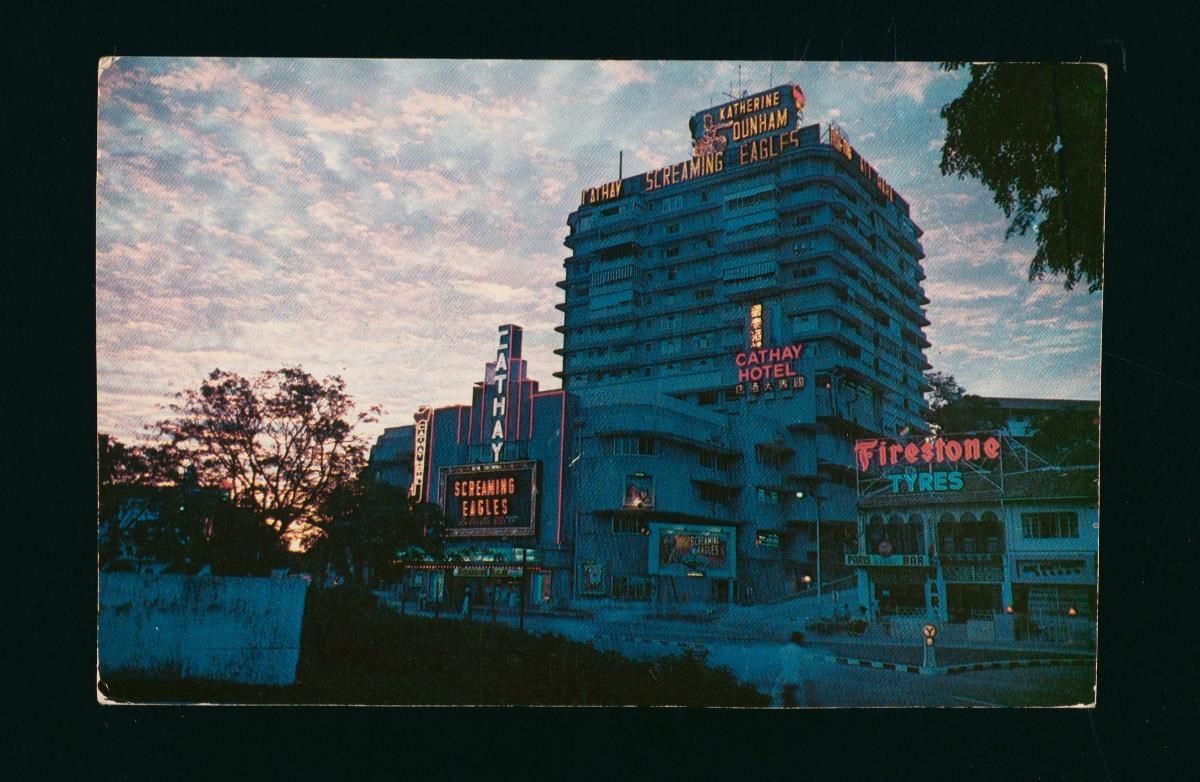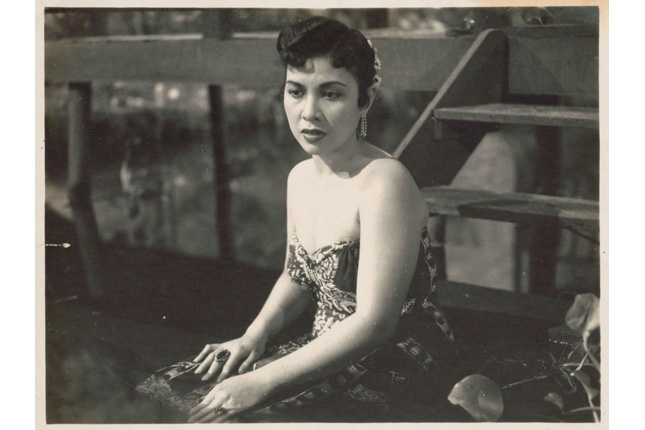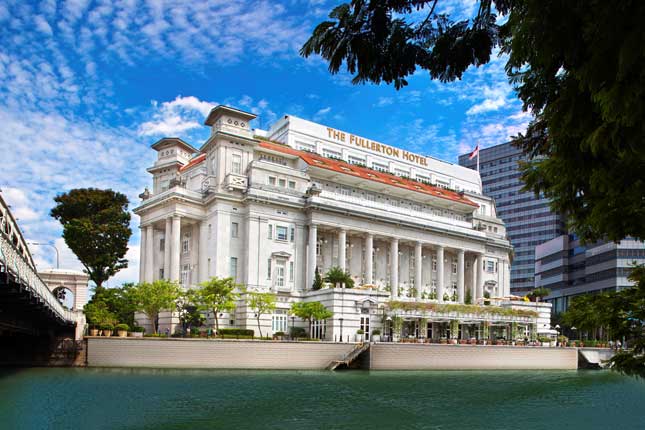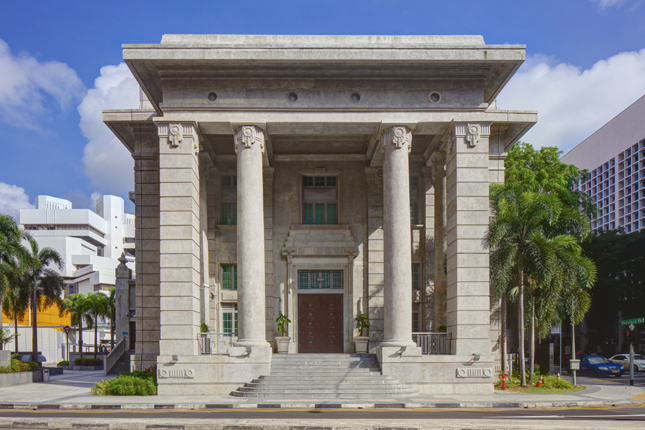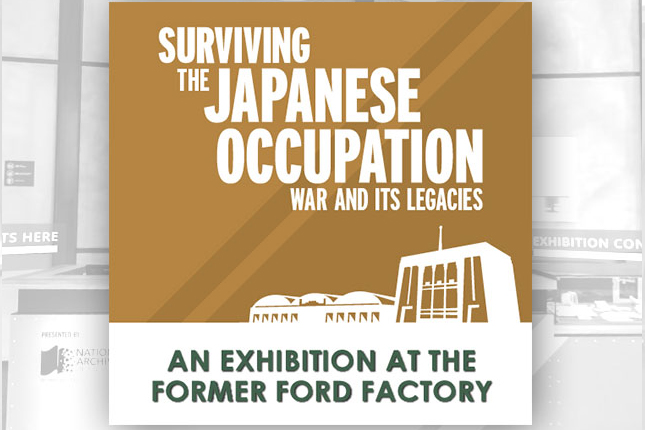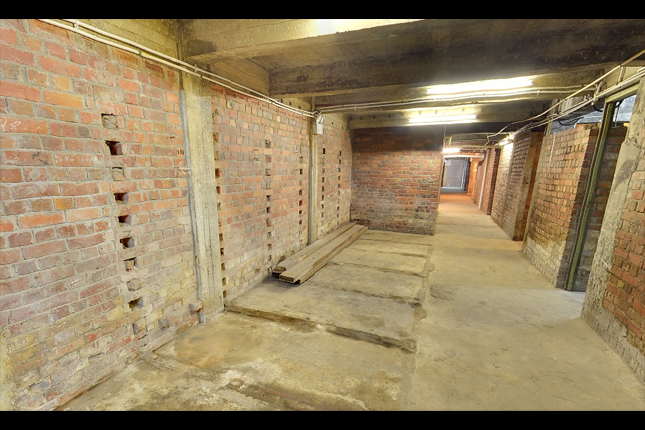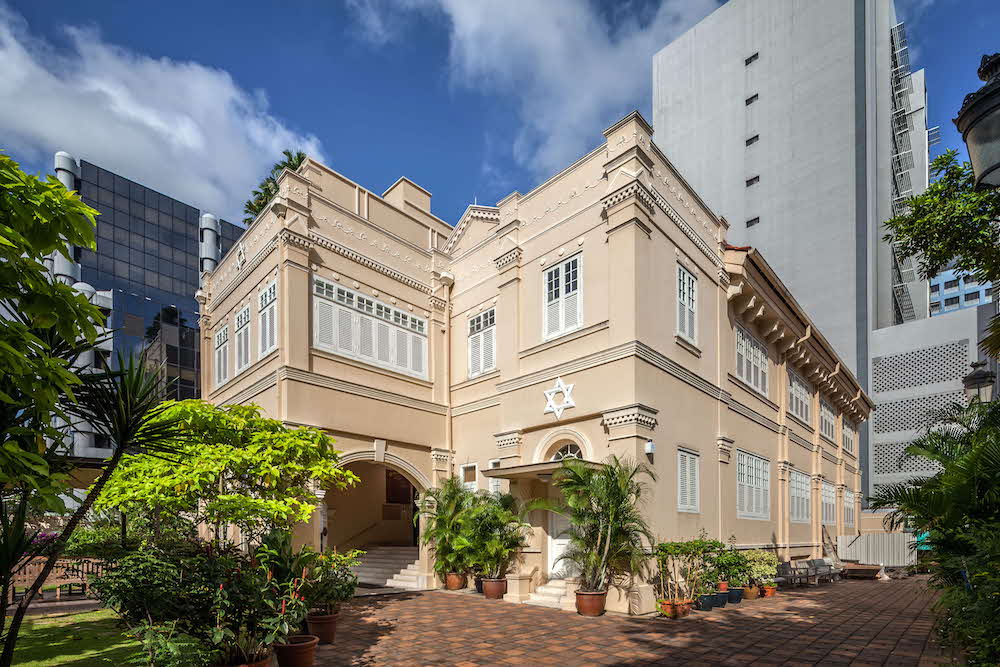The Art Deco façade wall fronting the modern glass architecture of The Cathay is the remnant of what used to be Malaya’s tallest building. Previously known as Cathay Building, it was the first skyscraper and the first air-conditioned cinema in Singapore. While the Former Cathay Building was built as a venue for entertainment, it served a much more sombre purpose during the war years.
Modern Skyscraper
Construction of the Former Cathay Building was initiated and financed by the founders of Cathay Organisation – Mrs Loke Yew (née Lim Cheng Kim), a successful businesswoman and philanthropist, and her son Loke Wan Tho. On 3 October 1939, Cathay Cinema was opened with the screening of the Technicolor film The Four Feathers that was produced by Hungarian-born British director Sir Alexander Korda. Much attention was paid to ensure high-quality acoustics and comfort in the 1,200-seater cinema, which was the first in Singapore to be fully air-conditioned.
When the 16-storey apartment building was completed in 1941, it became British Malaya’s first skyscraper, superseding the newly erected Supreme Court in height by approximately 50 feet (15 metres). There were altogether 32 optional-service units in the apartment block; residents could obtain their hot meals from the restaurant. A magnificent double-storey penthouse overlooking the Straits of Johor on the block’s uppermost level was reserved as the private residence of the Lokes. The entertainment and residential complex was considered to be ultra-modern and tremendously luxurious.
Second World War
When the Second World War broke out in Europe in 1939, films were shown at Cathay Cinema to raise funds for British war efforts. As the war loomed closer to Singapore, the entire Cathay Building was requisitioned by the British Administration and military. Besides Cathay Cinema, the main building was also occupied by offices and agencies of the British Administration, including the Malayan Broadcasting Corporation, Far Eastern Bureau of the Ministry of Economic Warfare, and Ministry of Information. A top-secret radar system was also installed in the building to coordinate radar traffic from various air bases in Singapore.
Being one of the sturdiest buildings in Singapore, Cathay Building was used as a shelter by civilians when the Japanese air raids began. On 15 February 1942, the British were instructed to fly a Japanese flag and a white flag at the top of Cathay Building for ten minutes as one of the conditions of surrender. During the Japanese Occupation (1942–1945), the Japanese Military Administration established their broadcast station and propaganda office – or Sendenhan – in the building, which continued to function as a cinema for Japanese movies and pro-Japanese propaganda films under the new name of Daitoa Gejiko (‘Greater East Asian Theatre’). Occasionally, the Japanese military would publicly display the severed heads of looters and other criminals outside the building to instil fear in the people.
Immediately after the war, the British Administration regained possession of Cathay Building. It became the headquarters and office of Supreme Allied Commander of Southeast Asia Lord Louis Mountbatten who formally accepted the Japanese surrender at the Municipal Building. Later, the building was returned to Loke Wan Tho, and was converted into a hotel and a cinema.
Cathay-Keris Studio
In 1953, Loke formed an alliance with the managing director of Keris Film Productions Ho Ah Loke to found Cathay-Keris Studio. Located on East Coast Road, the local studio initially specialised in making Malay-language films. One of its first films, Buluh Perindu (‘Bamboo of Yearning’, 1953), was the first Malay movie to be screened in colour. Cathay-Keris Studio also produced Pontianak (1957), a tale about a female vampire, which became a major box-office hit in Cathay Cinema; the studio went on to make four sequels to the movie.
The beginning of the Indonesian-Malaysian Konfrontasi (Confrontation) in 1963 meant the loss of the Indonesian market for locally produced films. Shaw Organisation’s Malay Film Production, a competitor of Cathay-Keris Studio in the production of Malay movies, closed in 1967. In 1973, the latter released its last film, Satu Titik di Garisan (‘A Point on the Line’), marking the end of the Malay film-making industry in Singapore.
Architecture
The Former Cathay Building was designed by Frank W. Brewer in the Art Deco style, an architectural style that was very popular in Singapore in the early twentieth century. Other buildings constructed in this style include the Former Tanjong Pagar Railway Station and the Former Ford Factory. Only the frontal façade of the building remains today; even then, the façade clearly exhibits features of the Art Deco style including the geometric forms and patterns seen in the rounded and stepped walls. Another prominent and iconic symbol of the Former Cathay Building is the large vertical signage that spells ‘Cathay’.
With the exception of this façade, the rest of the building has been replaced by a modern glass-cladded building. In a certain way, this serves as a reminder of the Former Cathay Building’s then avant-garde architecture.
Former Cathay Building Today
Now known as The Cathay, the building and its cinemas continue to be a popular entertainment venue in Singapore.
Our National Monuments
Our National Monuments are an integral part of Singapore’s built heritage, which the National Heritage Board (NHB) preserves and promotes for posterity. They are monuments and sites that are accorded the highest level of protection in Singapore.




